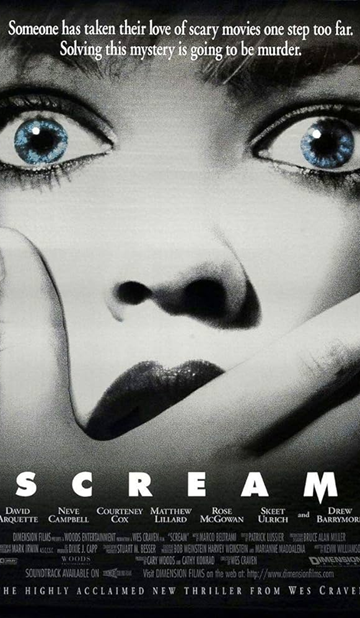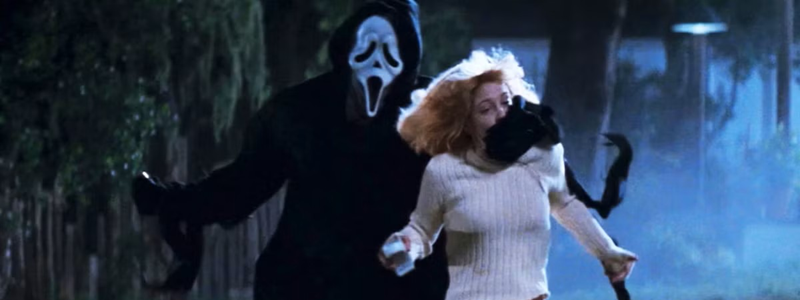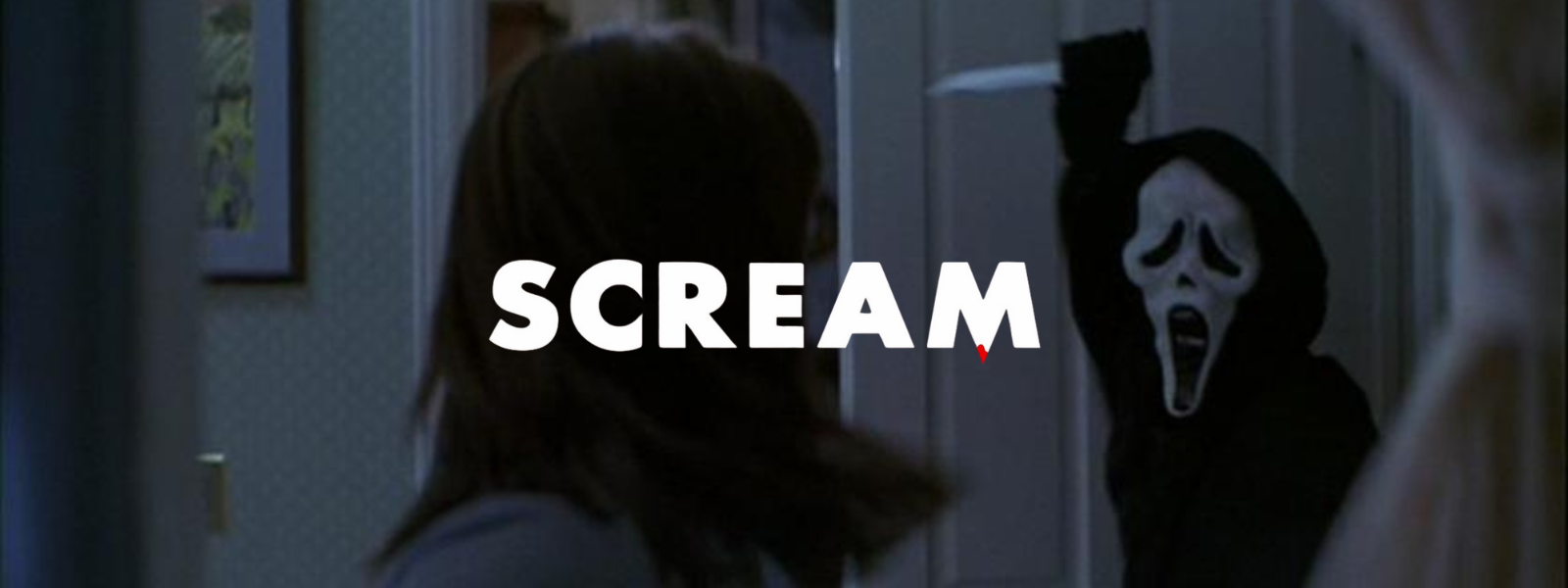Review – Scream
Director – Wes Craven
Starring – Neve Campbell, Courtney Cox, David Arquette, Skeet Ulrich, Rose McGowan, Matthew Lillard and Jamie Kennedy
Runtime – 111 minutes
Release date – 2nd May 1997
Certificate – 18
Plot – When Sidney receives a mysterious phone call and finds that her friends are being killed, she suspects that a serial killer may be on the prowl, who is also linked to her mother’s murder.

REVIEW:
Horror icon Wes Craven delivers yet another iconic horror movie and villain, placing Ghostface on the stage with other greats like Freddy, Jason and Michael Myers. It’s a film that not only reinvigorated the slasher genre but also redefined it for a new generation. Craven, alongside writer Kevin Williamson, crafted something clever, self-aware and genuinely terrifying. What makes Scream stand out isn’t just the blood and guts, it’s the brain behind it. This movie knows the audience has seen every cliché in the book, and it dares to call them out while still delivering all the chills we crave.
The opening of this movie is terrifying. Drew Barrymore, alone at home, answering a phone call that begins innocently enough but quickly spirals into pure dread. The sound of Ghostface’s voice, the mask that is both goofy and menacing, and the sudden bursts of violence, it’s all pure tension. Craven uses silence and space to his advantage, dragging the audience into that house and making us feel the same fear. The sequence remains one of the greatest openings in horror history, and the fact that a big-name actress like Barrymore meets such a brutal fate within minutes sets the tone perfectly: no one is safe.

What makes Scream even more effective is that it doesn’t shy away from showing the aftermath of violence. The original Halloween and Texas Chainsaw Massacre were surprisingly tame with their gore, relying on suggestion and atmosphere. Scream doesn’t hold back, it shows blood, chaos and the true horror of what happens when a masked killer invades suburban safety. Yet it never feels gratuitous. Every kill has weight, purpose and most importantly, style. Craven makes each one feel cinematic, balancing shock with suspense in a way only he can.
Then we have Sidney Prescott, one of horror’s greatest final girls. She’s smart, strong and deeply human. There’s trauma in her eyes, but also resilience that builds across the film. By the end, she stands tall among the genre’s icons alongside Jamie Lee Curtis’s Laurie Strode, cementing Neve Campbell as the ultimate scream queen. Sidney doesn’t just survive, she fights back, which is what makes her so enduring. You root for her not because she’s written as a victim, but because she becomes the embodiment of survival itself.
One of Scream’s most incredible achievements is its party sequence, which lasts an astonishing 42 minutes. It’s a masterclass in sustained tension, a slow-burn descent into chaos that blends terror, humour and blood-soaked mayhem. Craven keeps the camera moving, the atmosphere thick and the energy high, all while juggling multiple characters and storylines. It’s both claustrophobic and exhilarating, a culmination of everything the movie has been building toward. The tension doesn’t let up for a second, and that’s why it still works after countless rewatches.
I also love how imperfect Ghostface is as a killer. He trips, gets hit with doors and takes an almost comedic number of blows before getting back up. That human clumsiness makes him scarier because it reminds us he’s not supernatural, he’s just someone unhinged enough to kill. The realism of that is unsettling. There’s no indestructible force behind the mask, just a psychopath, and that makes every chase scene that much more intense. Craven understood that fear of the ordinary, the idea that evil doesn’t need a reason or a mask that can’t be removed.
The meta aspect of Scream is what made it revolutionary. The characters know horror movies inside out, and they’re not afraid to talk about them. Randy’s “three rules to survive a horror movie” — no sex, no drink or drugs and never say “I’ll be right back” — are now etched into pop culture. The film constantly plays with its audience, acknowledging the absurdity of horror clichés while still delivering them with razor-sharp precision. It’s both a satire and a love letter to horror fans, a film made by people who truly understand the genre.
Scream is a must-see for any horror fan. It’s a celebration of the very genre it pokes fun at and a reminder of why we fell in love with scary movies in the first place. The image of Ghostface wiping blood off the knife has become an instantly recognisable trademark, symbolising a franchise that continues to evolve nearly three decades later. And let’s be honest, every one of us who loves cinema absolutely resonates with Randy. His passion, his obsession, his encyclopaedic knowledge of horror, he’s all of us. Scream isn’t just a slasher film, it’s a cultural landmark that redefined fear, fun and fandom.



